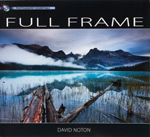David Noton explains how the elements of light, land, sky and composition came together when he captured this idyllic scene in rural Wales
 One of the foremost travel and landscape photographers working today, David Noton tirelessly travels the world in search of new challenges, which he shares with you here
One of the foremost travel and landscape photographers working today, David Noton tirelessly travels the world in search of new challenges, which he shares with you here
Britain is truly beautiful when the quality of the light is right. A patchwork rolling landscape such as this is a classic British scene. I took this image of rolling farmland on the edge of Snowdonia National Park, near Ysbyty Ifan, Conwy, North Wales.
My wife and I had rented a cottage in the area. Snowdonia is beautiful, particularly towards the fringes, which are covered in farmland. We?d actually driven up from our home in Dorset that afternoon. It was during the autumn and on this day there was the lovely low light you get at that time of year. We were out walking and had wandered up a nearby hill from our cottage. We looked back at the beautiful rolling Welsh countryside illuminated by the last light of the afternoon.
I was using a 70-200mm lens with my Canon EOS-1Ds Mark III mounted on a tripod. The focal length was nearer the 200mm end, which has helped to flatten the perspective, emphasising the true scale of the hills in the distance. The natural patchwork of fields stretching into the distance, the hills on the horizon and the cottage in the bottom right-hand corner of the frame were crucial elements in the composition. If I?d opted for a wideangle lens this would have accentuated the foreground and made the distance look far less impressive. If you want to show the scale of distant hills, then a long lens is the way to go.

Here the side lighting lights up areas of the patchwork fields, hedges and trees, revealing the textures of the landscape. There is a layered effect that draws the eye into the scene. If you look closely you can see the light has lit up the right sides of the trees (as you look at the image) and thrown the left sides into shadow. The light has also helped to subtly bring out the soft reddish-oranges and browns of the leaves.
There?s no rule to say you have to have lots of sky in a landscape and in some instances it is better to exclude it completely. You have to ask yourself, ?Is the sky bringing anything to the image?? There isn?t much sky in this picture, but what is included is important. I wanted the hills and heavy clouds to be part of the composition, but I?ve only hinted at what?s there; the majority of the image is about the intricate patchwork landscape dotted with sheep. I used a polarising filter because at this angle, and in this light, I could use it to accentuate the verdant greens of the vegetation.
Working in aperture-priority mode, my exposure was 1/8sec at f/8. With an image like this you have to assess your exposure carefully and adjust your settings as the light changes. It?s important to balance the exposure to maximise shadow detail without losing any in the highlights, which in this image are mainly in the sky.
All photographers would like to think they have their own style and that their pictures stand out from the rest. How that ?personal style? comes about is not something that can be manufactured. You have to develop your own vision and really work the landscape in front of you. It is important to take time to look at how the light is falling on the scene in front of you, and to think about how you can adjust your shooting position to make the most of what?s there. Photographing in places such as Bali or Canada is a great adventure but, when you come back from a trip like that, the beauty of the British landscape really hits you.
 David Noton?s new book Full Frame is now available price £25. It follows David?s journey to ten different locations around the world and gives invaluable insight into his approach and working methods. For more details, visit www.davidnoton.com
David Noton?s new book Full Frame is now available price £25. It follows David?s journey to ten different locations around the world and gives invaluable insight into his approach and working methods. For more details, visit www.davidnoton.com
David Noton was talking to Gemma Padley






